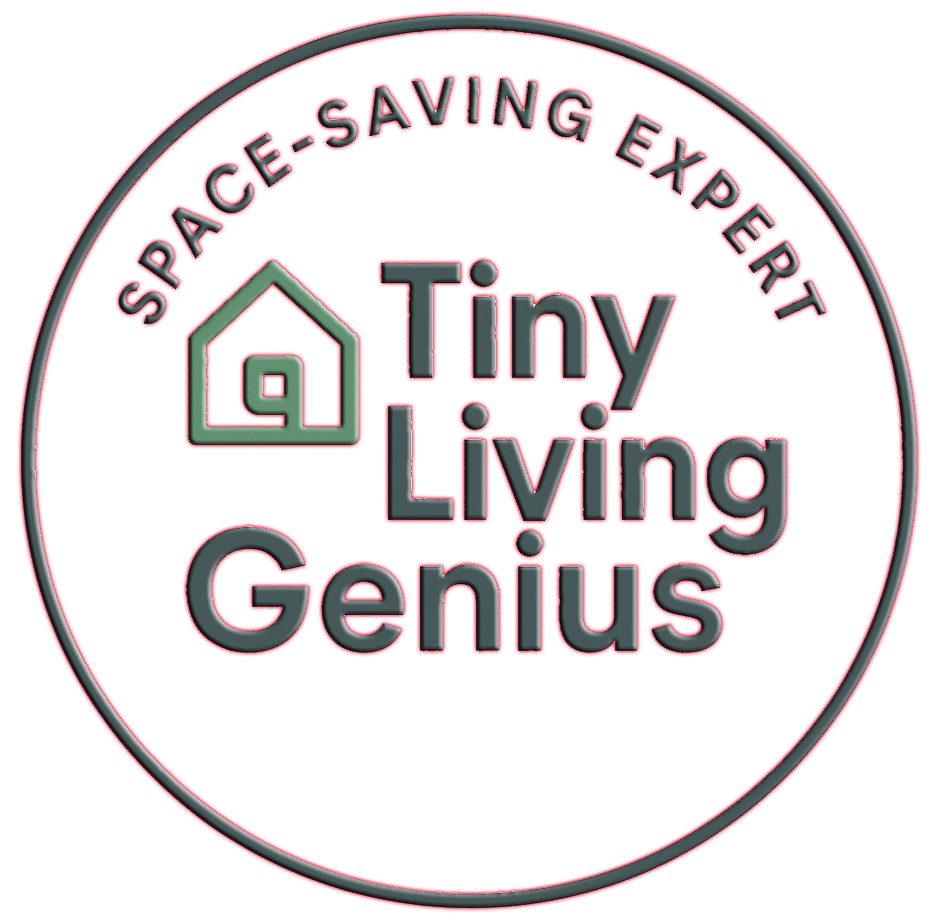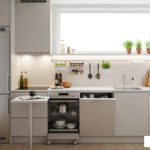Playroom ideas using vertical space: 5 Smart Fun
Why Smart Vertical Storage Transforms Small Playrooms
Playroom ideas using vertical space are the key to solving every parent’s biggest challenge: toy clutter taking over your home. When floor space is limited, the solution isn’t buying bigger bins – it’s looking up at your walls and reimagining how they can work harder for you.
Top 5 Vertical Storage Solutions for Small Playrooms:
- Wall-mounted floating shelves – Display books and store bins 50% higher than floor storage
- Picture ledges for book display – Show colorful covers while keeping books accessible
- Pegboard walls with hooks and baskets – Customize storage as kids grow and interests change
- Magnetic or chalkboard paint on doors – Turn unused surfaces into interactive play zones
- Tall cube shelving as room dividers – Create zones while maximizing storage capacity
Research shows that utilizing vertical space in playrooms can increase usable storage by up to 50% in smaller rooms. Even better, wall-mounted shelves and storage units help keep up to 70% of toys off the floor, reducing clutter and improving safety for active kids.
The benefits go beyond just storage. Playrooms that effectively use vertical space see a 40% reduction in perceived clutter, creating a more organized and enjoyable environment where children actually want to play and clean up.
I’m Ramy Saber, a Civil Engineer and founder of Tiny Living Genius, where I specialize in smart solutions for compact living spaces. My technical background in space optimization has helped countless families find creative playroom ideas using vertical space that transform chaotic toy rooms into organized, functional play areas. Let’s explore how you can lift your playroom – literally.
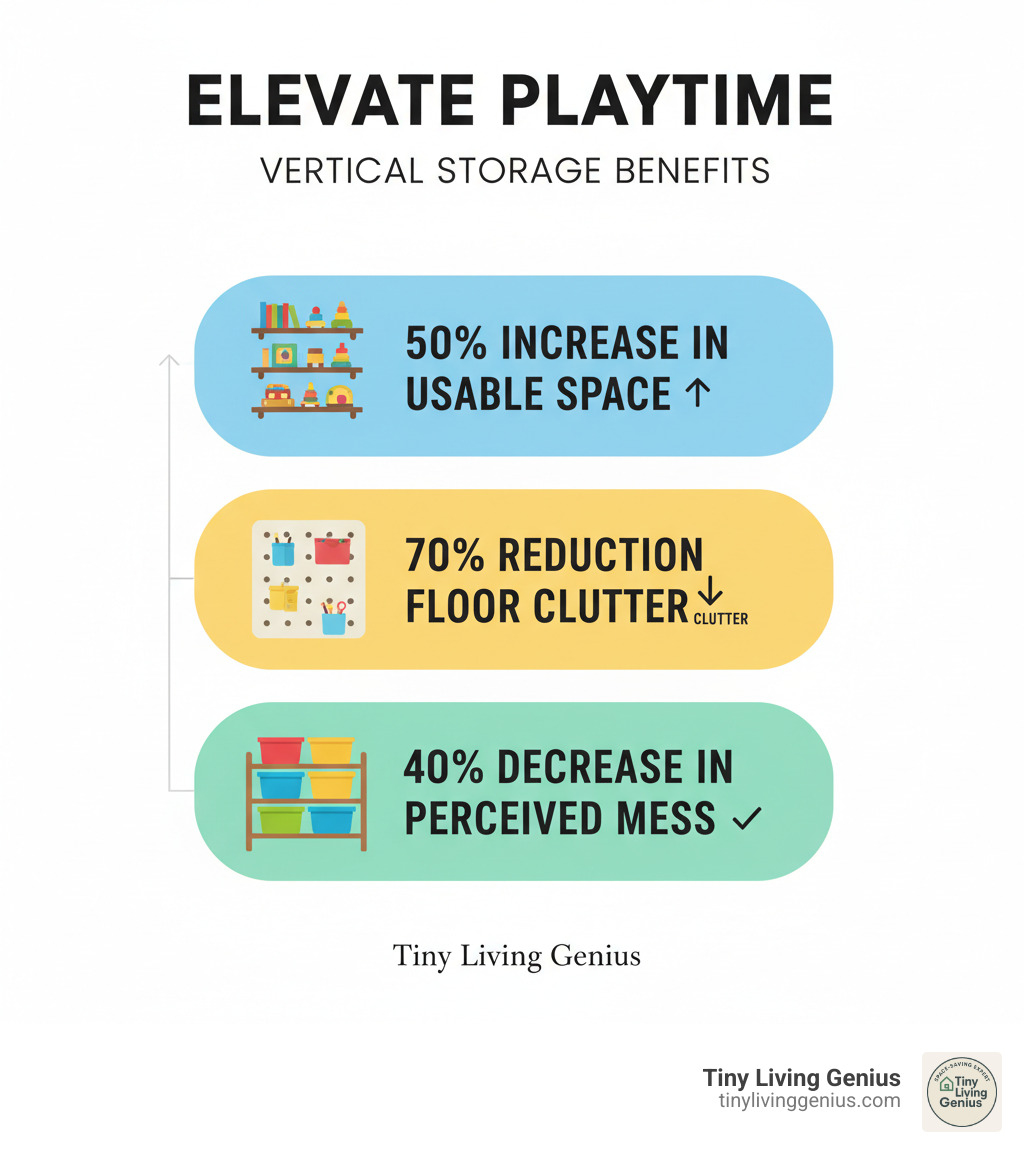
Go High with Wall-Mounted Storage
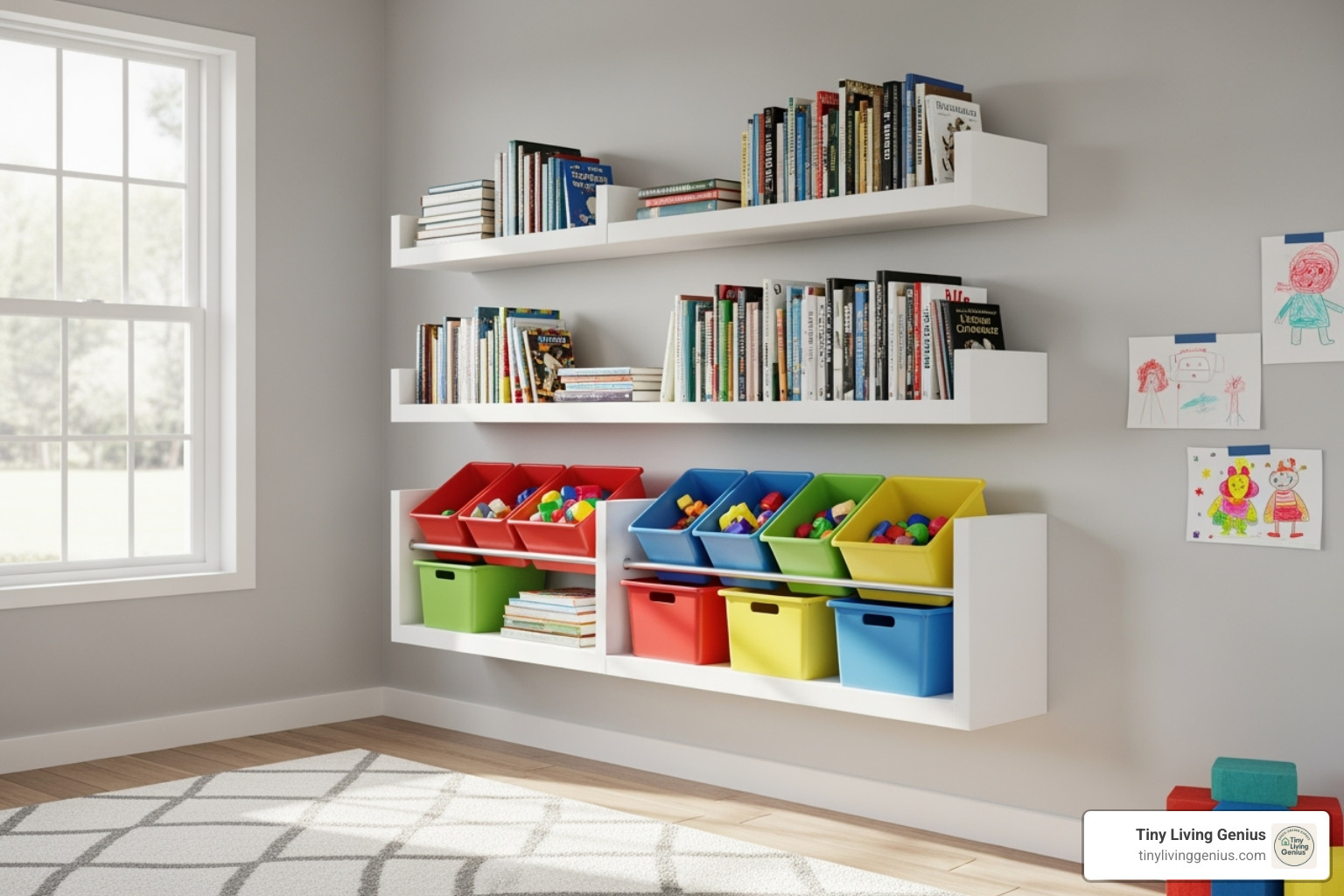
In small playrooms, your walls are untapped potential. Playroom ideas using vertical space follow a simple rule: when you can’t build out, build up.
Wall-mounted storage is a simple way to transform your playroom. By getting toys off the floor, the room feels bigger, safer, and more inviting. The value of floating shelves, picture ledges, wall-mounted bins, and cube shelving goes beyond clearing the floor. It’s about creating an intuitive system for your kids. When storage is accessible and organized, children are more likely to clean up on their own.
A well-planned toy rotation system becomes effortless when everything has a designated spot on the wall. You can easily swap out toys from higher shelves while keeping everyday favorites within reach. For more comprehensive approaches to organizing small spaces, check out our guide on Smart Storage Solutions for Small Spaces.
Wall Shelves and Ledges for Books and Decor
Imagine books displayed like artwork on your walls instead of scattered on the floor. Picture ledges are game-changers for book storage because they showcase the colorful covers.
This forward-facing display isn’t just for looks—it’s practical. Little hands can easily grab a book and, more importantly, slide it back into place. No more book avalanches or lost favorites under the couch.
Picture ledges from IKEA offer an affordable way to create this book paradise. You’ll also find great options on Amazon, including natural wood and clear acrylic versions that blend into your walls.
These ledges are versatile. Use them to create themed displays that change with the seasons, showcase your child’s latest art, or display small treasures. As kids grow, the same ledges can hold framed photos or small plants.
Bins and Cubbies for Toy Organization
Toys seem to multiply overnight. Wall-mounted bins and cube shelving help you regain control without stifling playtime.
The secret is categorizing toys in a way that makes sense to your kids: blocks in one bin, art supplies in another, and so on. This isn’t about Pinterest-perfection; it’s about making cleanup feel natural.
Clear bins are great for toys kids need to see, like action figures or building pieces. Opaque bins or attractive Wire Bins are perfect for items you want to tuck away for a cleaner look.
Here’s a key tip: label with both pictures and words. Pre-readers can match a toy car to the picture on the bin, and they’ll start recognizing the words over time. It’s learning disguised as organization.
The magic happens when you mount these solutions at child-friendly heights. When kids can reach their toys and put them back without help, they develop cleanup habits naturally. Keep everyday favorites low and accessible, storing less-used items up high.
Create Interactive Vertical Play Zones
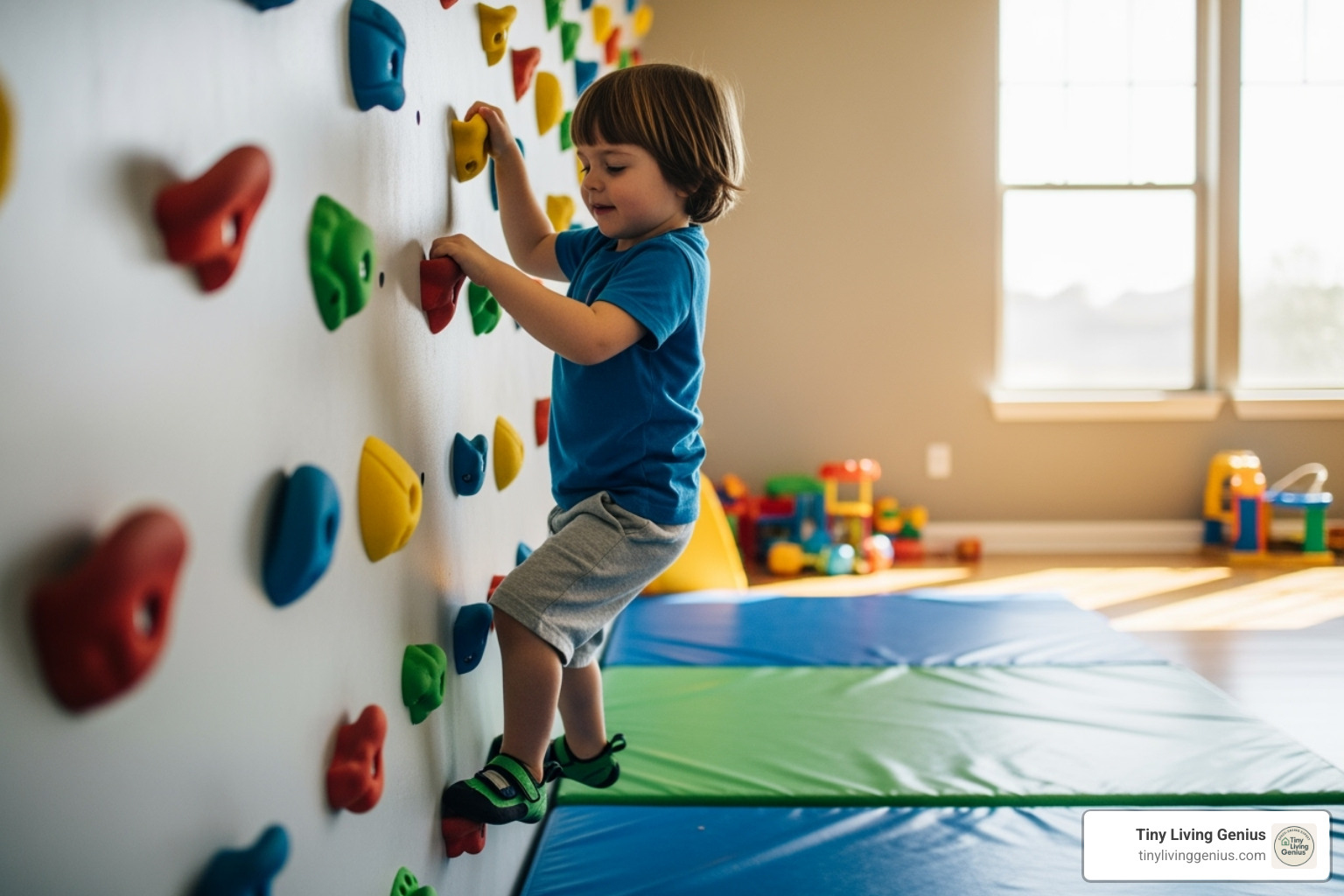
Playroom ideas using vertical space go beyond storage. Your walls can become interactive adventure zones that encourage movement and creativity without sacrificing precious floor space. That blank wall could become a personal climbing adventure or art studio. These vertical play features work especially well in corners and on doors—spaces that often go unused.
These installations grow with your kids, adapting to their changing interests. A simple wall change can turn a cramped playroom into an exciting activity center. For more creative ways to maximize every inch of your small space, explore our guide on Creative Ideas for Small Space Furniture: Maximizing Functionality Small Space.
Build a Climbing Wall or Rope Ladder
An indoor climbing wall can transform even reserved children into confident climbers, and building one is simpler than you might think. The gross motor skill development it provides is incredible.
The basic construction involves mounting a sheet of plywood onto lumber strips, then securing everything into wall studs. Safety is paramount, so you’ll need padded flooring underneath—crash pads or thick exercise mats are perfect. Rocky Mountain Kids’ Climbing Holds are designed for little hands and feet, making the experience safe and fun.
For a less permanent option, consider a rope ladder or hanging rings. Installed into ceiling joists, they provide a fantastic upper body workout and give active kids a healthy outlet, especially on rainy days.
Install a Magnetic or Chalkboard Wall
Turning a wall or the back of a door into a magnetic or chalkboard surface creates an ever-changing canvas for learning and art. Kids can practice letters, solve math problems, and create masterpieces on these interactive walls.
Chalkboard paint is easy to work with. You can buy it ready-made or mix your own. The back of a door is a perfect spot, as it’s often wasted space and gives kids a private drawing area.
Magnetic walls offer even more possibilities. Start with magnetic primer, then paint over it with any color. This creates a surface for Melissa and Doug Magnetic Alphabets, Animal Magnets, and even complex TOMY Magnetic Gears.
These surfaces keep small pieces organized and off the floor while making learning visible and accessible, containing mess while encouraging creativity.
The Ultimate Guide to Playroom Ideas Using Vertical Space

To take your playroom ideas using vertical space to the next level, think beyond basic shelves. Transform entire walls into adaptable systems that serve as storage, art displays, and learning centers all in one.
What’s great about these advanced vertical solutions is how they grow with your family. An art supply station for your preschooler can easily become a homework hub for an elementary schooler. The same wall that holds picture books can later display science fair projects.
The secret is choosing systems that offer maximum flexibility while maintaining an organized, welcoming feel. For more insights on creating adaptable spaces, check out our Efficient Design for Small Spaces: Stylish Living Solutions for Small Spaces.
Harness the Power of Pegboards for Ultimate Flexibility
For a truly game-changing solution, consider a pegboard. Its beauty lies in its incredible adaptability. You can hang baskets for art supplies, add shelves for books, or use hooks for dress-up clothes. As your child’s interests change, you simply rearrange the accessories.
Pegboards can hold everything from car collections in small cups to craft supplies on dedicated hooks. Baskets can corral LEGO pieces that used to scatter across the floor. The visual accessibility encourages kids to be independent, and they often become more diligent about putting things back where they belong.
Children start to understand organization naturally when they can see where everything goes. It’s like a giant tool board, but for the tools of childhood creativity.
Creative playroom ideas using vertical space for an Art Gallery
Every parent knows the dilemma of managing the constant flow of children’s artwork. Creating a dedicated art gallery on a playroom wall solves this problem while making your little artist feel their work is treasured.
The simplest approach is stringing curtain wire with clips across a wall. This creates an instant rotating gallery for fresh masterpieces. It makes the art feel special while keeping it contained.
Cork boards cut to custom sizes are another fantastic solution, especially for 3D creations. For a more polished look, the same picture ledges mentioned earlier work beautifully for displaying framed artwork.
Involve your children in curating their gallery. They learn to choose their best work and develop pride in their space. A dedicated art display can boost a child’s confidence and encourage them to keep creating.
More playroom ideas using vertical space for Learning
Making educational tools a natural part of the play environment creates opportunities for fun, effortless learning.
Wall-mounted calendars become interactive tools for tracking events and understanding time. Educational charts with alphabets, numbers, or shapes become natural reference points during play. I’ve watched children unconsciously practice letter recognition simply because the alphabet was visible on their wall.
Consider creating a weather station where your child can track daily conditions, or install a growth chart that becomes a source of pride. A world map mounted at child height can spark conversations about geography.
These vertical learning stations make abstract concepts tangible and visible. Instead of feeling like schoolwork, learning becomes part of the play routine. For more guidance on selecting elements for your space, explore our guide on Choosing Furniture for Small Spaces Effectively.
Design Smart with Multi-Functional Furniture and Nooks
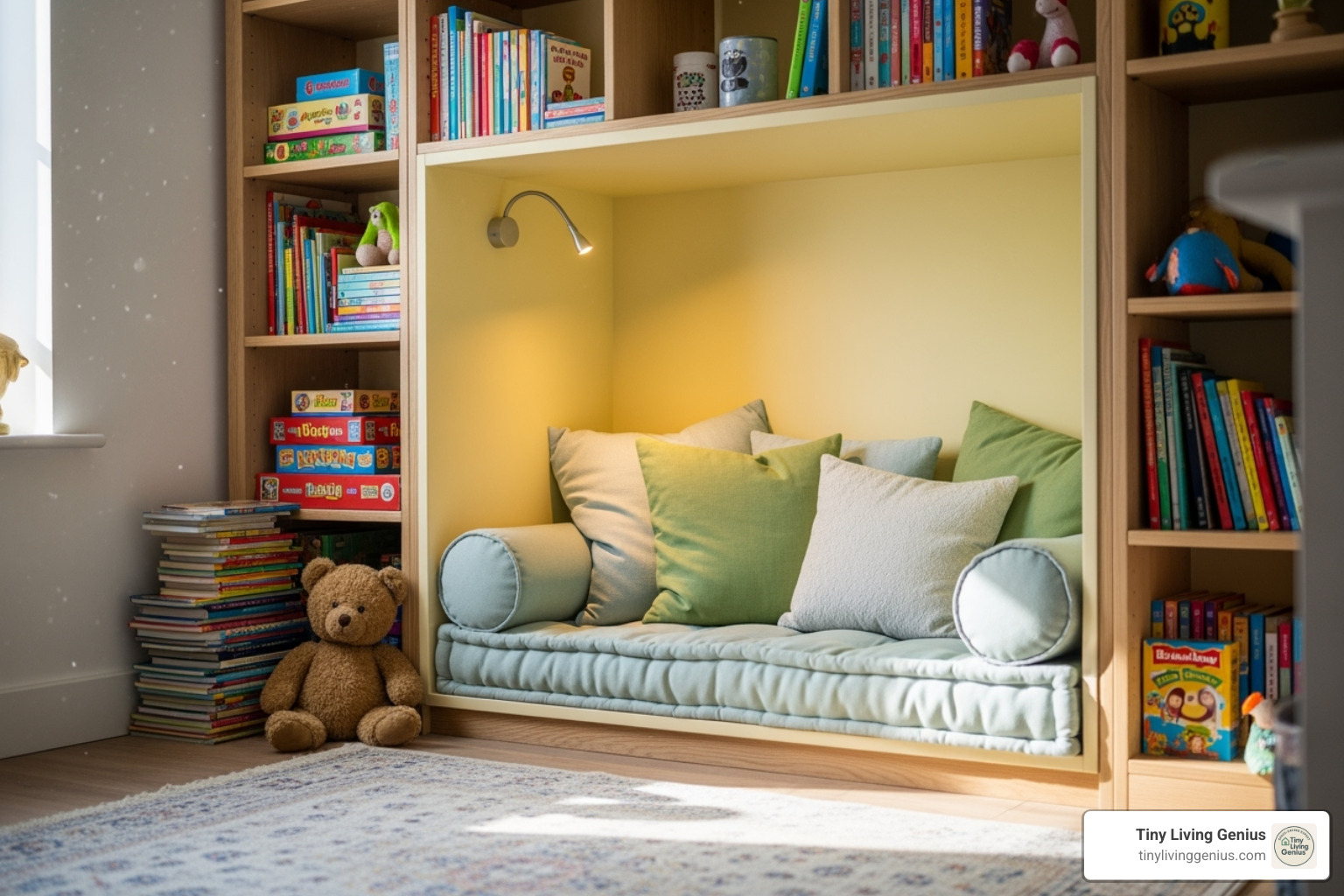
In a small playroom, every piece of furniture must be multi-functional. The key is choosing items that serve double duty and use vertical space to create distinct zones without consuming floor area. Playroom ideas using vertical space shine when we think beyond simple storage.
We can create cozy reading nooks in tall shelving units, turn loft beds into adventure zones, and use furniture to divide spaces while adding function. These solutions provide a coveted built-in look that feels custom and polished while maximizing every square inch.
Multi-functional furniture grows with your family. A play fort today might become a homework station tomorrow. For more inspiration, check out our guides on Creative Furniture Solutions for Small Spaces and The Ultimate Guide to Small Apartment Furniture: Smart Solutions for Tiny Living.
Loft Beds with Play Space Below
Loft beds are the superheroes of space-saving furniture. By lifting the sleeping area, they double your usable space, freeing up the footprint below for play. This is brilliant for combining sleep and play in a single room, especially where bedrooms serve as playrooms.
The magic is in the newly created space underneath. Transform it into a quiet reading corner with cushions and a lamp. Create a desk area for homework and art projects. Hang curtains to build the ultimate fort-building space. Or dedicate it to a play kitchen, dollhouse, or train table.
This approach creates a complete vertical ecosystem that maximizes square footage while providing endless possibilities for imaginative play. The key is making the space feel intentional. Add soft textures, good lighting, and easy access to toys. When kids have their own special nook, they’re more likely to engage in independent play.
Tall Bookshelves as Room Dividers
Distinct zones for different activities can improve a playroom, but walls can make a small space feel cramped. Tall, open-back bookshelves are perfect for creating separation while maintaining an airy feel and providing vertical storage.
Imagine a large shelving unit creating a boundary between a reading area and an active play zone. The open cubbies work from both sides, holding books and toy bins while allowing light to flow through. You can fill some cubbies with attractive bins and leave others open to showcase favorite items.
The Ikea Expedit (now Kallax) shelving unit is a popular choice for this approach. Its sturdy, modular design is perfect for room division and offers storage flexibility.
Safety is absolutely crucial when using tall furniture as room dividers. Always anchor these units securely to the wall to prevent tipping—this is non-negotiable with kids. This strategy helps create order and purpose in the playroom, guiding children toward specific activities while keeping them safe. For more ideas on choosing the right furniture, explore our Best Furniture Ideas for Small Spaces.
Frequently Asked Questions about Vertical Playroom Storage
When exploring playroom ideas using vertical space, parents often have valid questions about safety, practicality, and getting kids to adopt new systems. Let’s address the most common concerns.
How do I make vertical storage safe for kids?
Safety is everything in children’s spaces. Done correctly, vertical storage is safer than floor storage because it eliminates tripping hazards. Here are the key rules:
- Anchor all tall furniture to the wall using anti-tip hardware. This is non-negotiable.
- Use wall studs whenever possible when mounting shelves, especially for heavy loads.
- Store heavier items on lower shelves to keep the center of gravity low and prevent units from becoming top-heavy.
- Check weight limits on all shelves and hardware. They are requirements, not suggestions.
- Install soft flooring like foam mats or thick rugs below any climbing structures to cushion falls.
What’s the best way to store books vertically?
The best method depends on your child’s age and how they interact with books.
For toddlers and preschoolers, forward-facing displays on picture ledges are magic. When kids see the covers, they are more likely to pick up a book. It also prevents them from pulling out every book to find the one they want.
Older kids do well with traditional spine-out storage on sturdy shelves. The key is keeping their favorite books at eye level and organizing them in a way that makes sense to them—by series, character, or even color.
In all cases, low, accessible bookshelves encourage independent reading habits by allowing kids to grab and return books without help.
How can I get my kids to help keep the playroom tidy?
The secret is making organization intuitive so kids want to participate.
- Use clear labels with pictures, especially for pre-readers. Matching a toy to a picture is a simple task that makes sense to them.
- Place storage at their height. If a child can’t easily reach a bin, they won’t be able to put things away independently.
- Make cleanup a game. Use a timer or a favorite song to create a fun challenge.
- Create a “one-in, one-out” rule. Before a new toy comes in, help your child choose an old one to donate. This manages volume and teaches valuable lessons.
- Lead by example. When kids see you tidying up, they learn to value an organized space. Involving them in setting up the system also gives them a sense of ownership.
Conclusion
Tackling toy clutter with playroom ideas using vertical space is about more than just organization. It’s about creating an environment where children thrive and feel empowered to take ownership of their play areas.
We’ve seen how wall-mounted shelves, interactive walls, flexible pegboards, and multi-functional furniture can transform a room. These solutions don’t just organize—they build confidence, foster independence, and create environments where cleanup becomes as natural as play itself.
At Tiny Living Genius, we believe that small spaces shouldn’t limit big dreams. Every family deserves a home that works beautifully, regardless of square footage. When we look up and use our walls as valuable real estate, we find that the solution to our space challenges has been there all along.
Your playroom change is waiting. Ready to open up the full potential of your home’s vertical space? Explore more ways to maximize vertical space in small spaces and find how to live larger, no matter your footprint.
